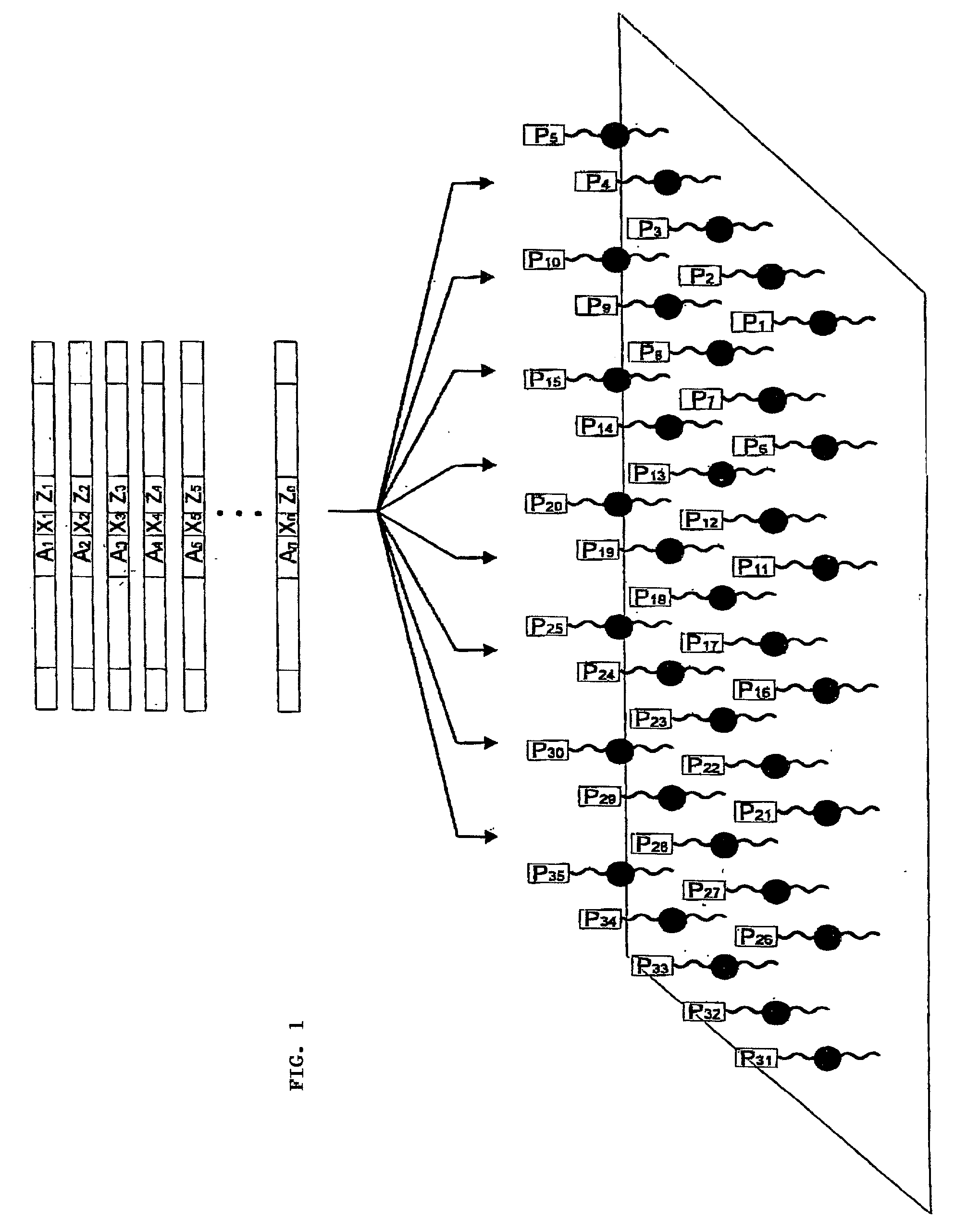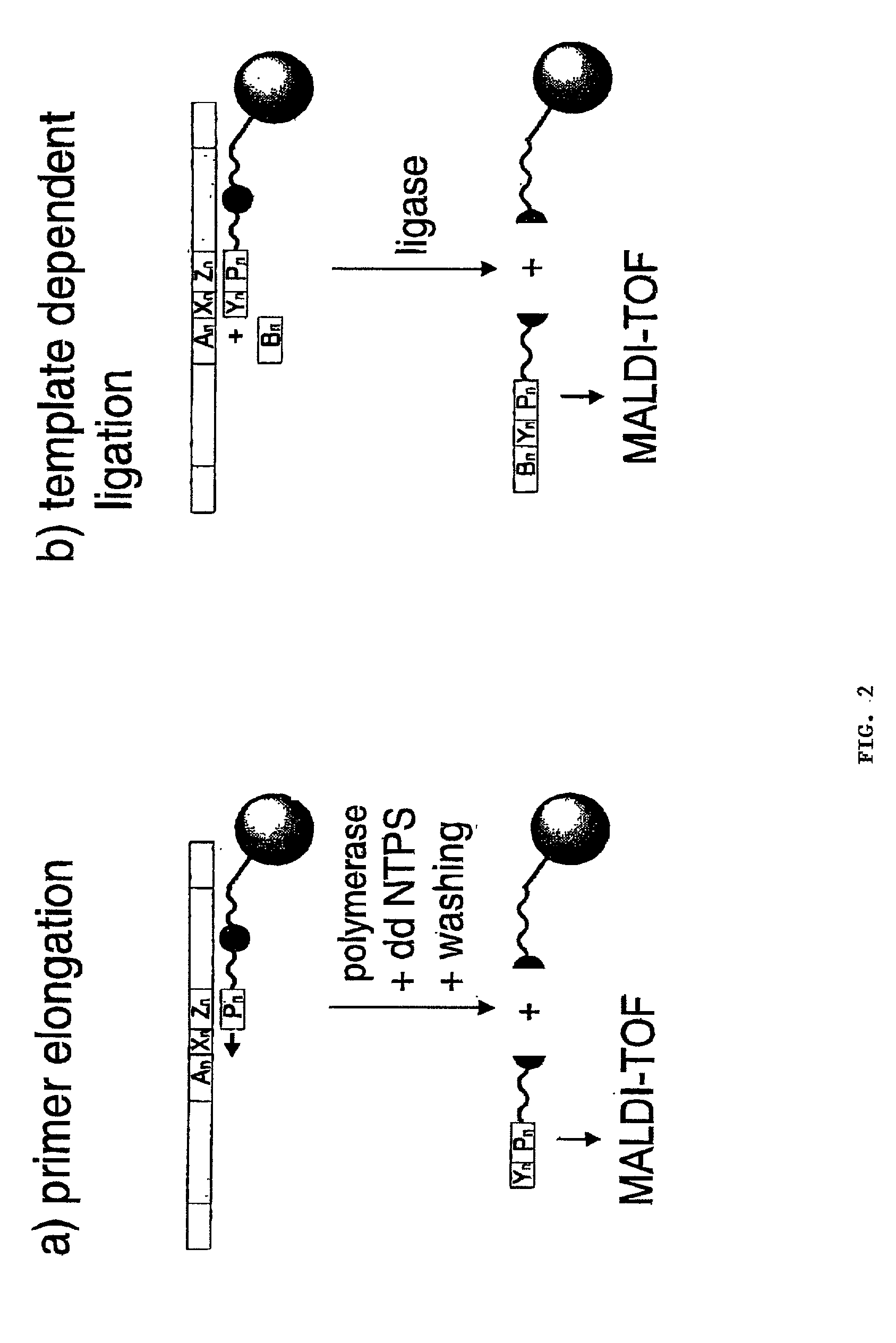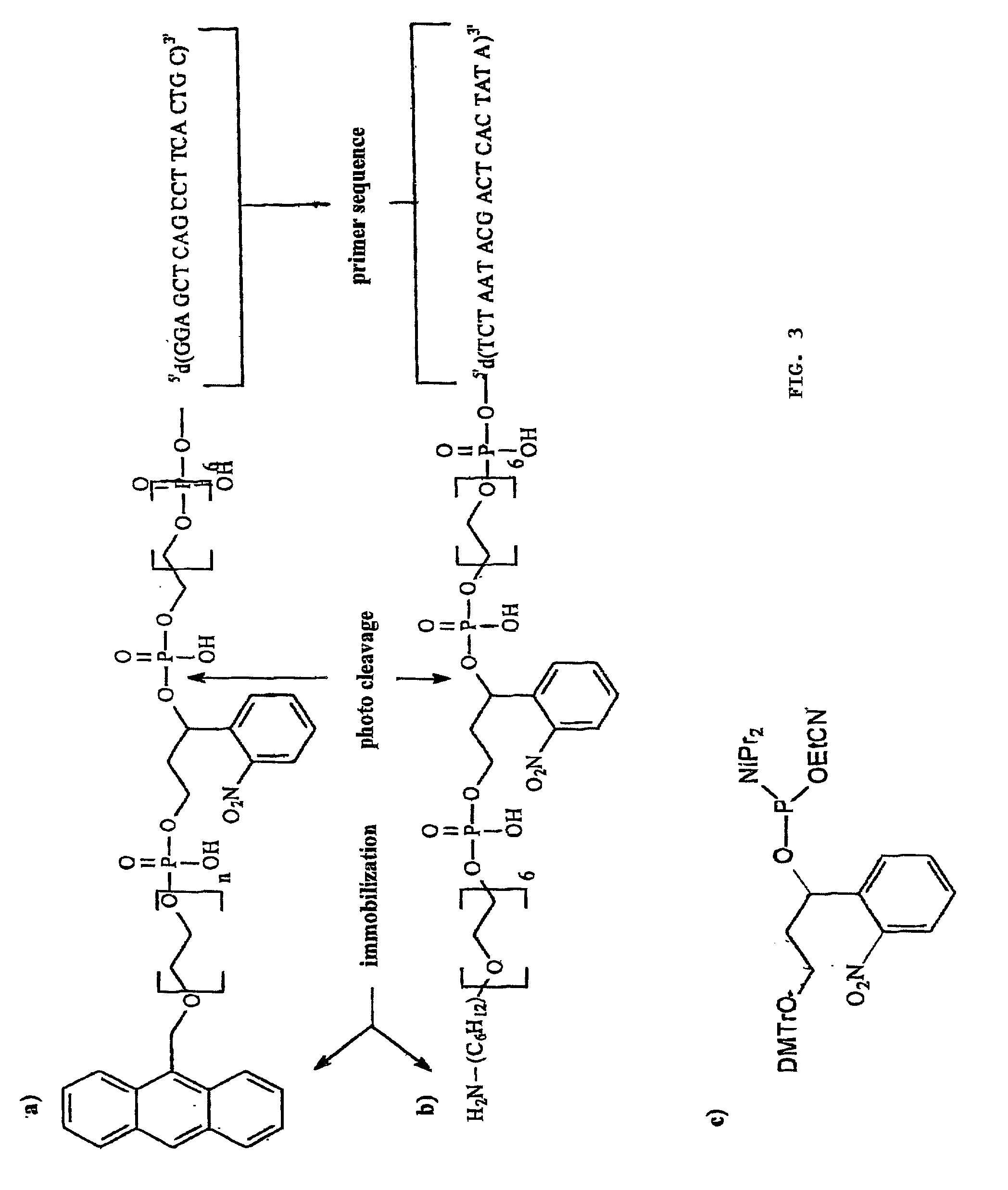Multiplex sequence variation analysis of DNA samples by mass spectrometry
- Summary
- Abstract
- Description
- Claims
- Application Information
AI Technical Summary
Benefits of technology
Problems solved by technology
Method used
Image
Examples
Embodiment Construction
[0032] The production of the photocleavable oligonucleotide arrays can on the one hand be performed by applying conventionally synthesized oligonucleotide conjugates to appropriately prepared surfaces. The microfluid pipetting or dispensing system required for this is well known to experts in this area. Oligonucleotide probes as required by the invention are mainly fixed on the surface covalently, preferably via a flexible spacer--particularly polyethylene glycol--whereby linking is usually performed at either the 3' or the 5' terminus of the oligonucleotide. The preferably used oligonucleotide conjugates also contain in addition to the photocleavable site another reactive functional group for covalent linking; e.g. biotin, amino, thiol carboxyl, or diene groups such as anthracene. Suitable photocleavable sites for the invention are chiefly light sensitive o-nitrobenzyl residues, particularly 1-o-nitrophenyl-1,3-propane-diphosphate. A selection of photocleavable oligonucleotide prob...
PUM
| Property | Measurement | Unit |
|---|---|---|
| Mass | aaaaa | aaaaa |
| Elongation | aaaaa | aaaaa |
| Stability | aaaaa | aaaaa |
Abstract
Description
Claims
Application Information
 Login to View More
Login to View More - R&D
- Intellectual Property
- Life Sciences
- Materials
- Tech Scout
- Unparalleled Data Quality
- Higher Quality Content
- 60% Fewer Hallucinations
Browse by: Latest US Patents, China's latest patents, Technical Efficacy Thesaurus, Application Domain, Technology Topic, Popular Technical Reports.
© 2025 PatSnap. All rights reserved.Legal|Privacy policy|Modern Slavery Act Transparency Statement|Sitemap|About US| Contact US: help@patsnap.com



